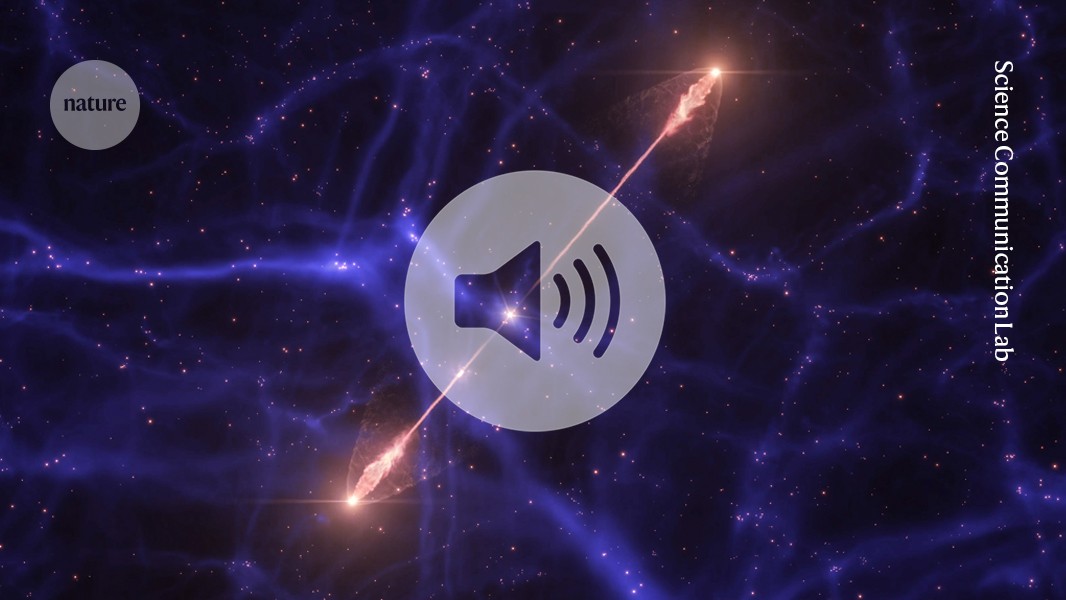Download the Nature Podcast 18 September 2024
In this episode:
00:45 The biggest black hole jets ever seen
Astronomers have spotted a pair of enormous jets emanating from a supermassive black hole with a combined length of 23 million light years — the biggest ever discovered. Jets are formed when matter is ionized and flung out of a black hole, creating enormous and powerful structures in space. Thought to be unstable, physicists had theorized there was a limit to how large these jets could be, but the new discovery far exceeds this, suggesting there may be more of these monstrous jets yet to be discovered.
Research Article: Oei et al.
09:44 Research Highlights
The knitted fabrics designed to protect wearers from mosquito bites, and the role that islands play in fostering language diversity.
Research Highlight: Plagued by mosquitoes? Try some bite-blocking fabrics
Research Highlight: Islands are rich with languages spoken nowhere else
12:26 A sustainable, one-step method for alloy production
Making metal alloys is typically a multi-step process that creates huge amounts of emissions. Now, a team demonstrates a way to create these materials in a single step, which they hope could significantly reduce the environmental burdens associated with their production. In a lab demonstration, they use their technique to create an alloy of nickel and iron called invar — a widely-used material that has a high carbon-footprint. The team show evidence that their method can produce invar to a quality that rivals that of conventional manufacturing, and suggest their technique is scalable to create alloys at an industrial scale.
Research article: Wei et al.
25:29 Briefing Chat
How AI-predicted protein structures have helped chart the evolution of a group of viruses, and the neurons that cause monkeys to ‘choke’ under pressure.
Nature News: Where did viruses come from? AlphaFold and other AIs are finding answers
Nature News: Why do we crumble under pressure? Science has the answer
Never miss an episode. Subscribe to the Nature Podcast on Apple Podcasts, Spotify, YouTube Music or your favourite podcast app. An RSS feed for the Nature Podcast is available too.


